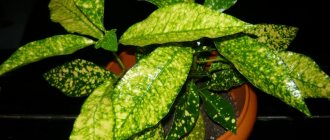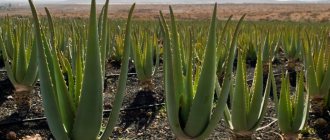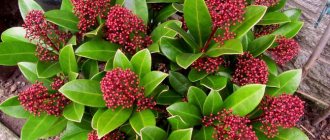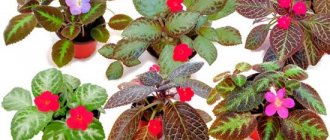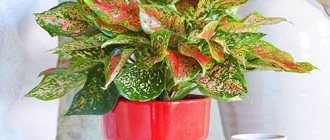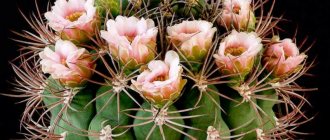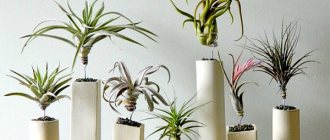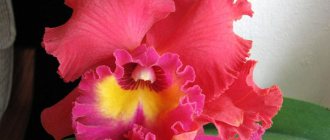Strelitzia is a unique, brightly colored plant that is native to South Africa. The beautiful flower resembles a colorful bird, hence its name. This interesting plant grows to a height and width of 1.5 m.
Bird of paradise is one of the most colorful plants that can be grown at home. It is a close relative of the banana plant, getting its name from the splayed, pointed flowers that resemble a bird in flight. For many years, Strelitzia was considered a collector's plant.
Description of decorative culture
Today Strelitzia is used for growing at home. This indoor plant adds bright notes and exquisite details to the interior. However, when choosing a flower, it is necessary to take into account the height of the adult plant. It can exceed 2 m. The leaf plates have a length from 50 to 90 cm. In the lower part they are tightly located around the root collar.
According to the description of the flower, its inflorescences are located on long peduncles. They have an axillary structure, externally resembling a continuing stem. In the structure of the flower, an asymmetrical perianth is observed, which is complemented by six parts.
The flowers are a combination of bright orange, blue and red. Their length can reach 10-20 cm. The flowering period is from 1 to 3 months. At the age of 4 years, the flower can bloom twice a year. The photo of Strelitzia reginas shows a flowering plant.
In the wild, this ornamental crop consists of dense thickets of evergreen perennials. Some species can reach a height of more than 3 m.
The plant has beautiful inflorescences and powerful leaves. Inside them there is juicy and watery pulp. The leaf mass has an oval shape. The leaf color can vary from dark green to bluish-blue.
Outwardly, they bear some resemblance to a banana tree. Their petioles are much longer. They range from 40 to 65 cm in length. For home cultivation, varieties with compact sizes are chosen. An adult plant, if all recommendations are followed, will not exceed 1.5 m in height.
Reproduction methods
Strelitzia is propagated by dividing the bush, shoots and seeds. But it is worth considering that bushes that have reached six years of age can be divided, and the seeds very quickly lose their viability. With the right approach and technology, growing Strelitzia is quite simple, but all methods require certain skills.
Seeds
To form seeds after flowering, it is necessary to artificially pollinate flowers. Seed pods begin to form a month after flowering begins, and ripening can last about six months. It is impossible to pick unripe boxes, as the seeds will lose their properties.
When purchasing seeds in a store, you need to pay attention to the timing of seed collection. If more than a year has passed since the seeds were collected, it is better to refuse the purchase, since the seeds most likely will not germinate. According to statistics, 1 out of 10 seeds germinate 6 months after collection.
Purchased or collected seeds can be sown at any time of the year. Before planting, the seeds are soaked in warm water for a day. But it is not recommended to allow it to cool completely; it is necessary to periodically change the water to warm. After the seeds swell, the remains of the fruit and other debris are removed from them.
Planting stages:
Recommended by topic
Stromantha Night Violet Aloe
- To plant strelitzia, it is necessary to prepare nutritious soil consisting of equal parts of peat, compost and river sand.
- Seeds are planted in individual cups or pots with a volume of 0.25 to 0.40 liters.
- Drainage holes must be made in the bottom of the container to drain excess water.
- The finished soil is poured into cups, poured with boiling water and compacted.
- After the soil has cooled, add a layer of sand (2 cm) and press the seeds into it.
- You need to bury the seed until the edge of its “back” remains on the surface.
- The container is covered with film or glass.
- For germination, the cups are placed in a lighted place (without direct rays) at a temperature of +22 to +25 °C.
- The first shoots may appear in a month and a half, but sometimes the process takes up to six months.
- After the seedlings form one leaf, they begin to be ventilated regularly, removing the cover for 10–20 minutes a day.
- The substrate is periodically moistened with boiled water from a spray bottle.
When the seedlings grow stronger and produce several leaves, they are transplanted into larger pots.
It should be remembered that the Strelitzia root is thick, but fragile. Therefore, the seedlings are transferred to a new place very carefully along with a lump of earth. Broken roots can slow down the development of a young flower or lead to its death.
Reproduction by dividing the bush and lateral shoots
Only bushes aged 6 years and older are suitable for planting. Earlier planting may lead to the death of the plant.
The procedure is carried out after the flowering period, when the plant is resting. An adult bush is removed from the pot, the excess soil is shaken out and the roots are carefully unraveled.
The root system is very fragile and brittle. If there is a risk of damaging the roots, then it is better to abandon the idea, since improper division can destroy the plant.
Seating steps:
- The divisions should have well-developed shoots and leaf blades. The separated parts are planted in individual pots of the appropriate diameter. The container should exceed the volume of the roots by only a few centimeters.
- To plant shoots, use a mixture of peat, sand and humus in equal proportions.
- Place a drainage layer on the bottom of the pot, then add the nutrient mixture.
- The bush is placed in the center of the pot and gradually sprinkled with earth on all sides.
- The pot is shaken periodically so that the soil fills the entire space between the roots of the plant.
If the division is high, then at the stage of filling the soil it is necessary to install a support so that the bush does not fall to the side under its own weight and does not break.
Subtleties of home growing
Home care consists of several important factors. Following the recommendations allows you to enjoy the decorative qualities of the flower for a long time. They consist of the following requirements:
Temperature compliance
A houseplant is highly dependent on the temperature in the enclosed space. Experts recommend sticking to 22-25 degrees in the summer. During the dormant period, the flower needs a temperature of at least 10 degrees.
Strelitzia feels comfortable in the fresh air. That is why the room in which the container with the flower is located needs to be regularly ventilated.
Lighting
Plants require bright lighting. In summer, additional devices will be needed to disperse the light rays;
Regularity of watering
How to water a flower? For active growth and abundant flowering, it is necessary to regularly moisten the soil substrate. To do this, use filtered liquid at room temperature. The filler must have drainage components that allow excess moisture to be removed. From October to February, watering is reduced to once a week.
Humidity level
Paradise culture needs high humidity. Its indicator should reach 60-70 percent. In hot summers, the leaves should be regularly sprayed with water. Particular attention must be paid to the cleanliness of the sheet plates. The presence of dust reduces the rate of growth and metabolic processes.
Soil composition
Strelitzia reginae prefers a nutrient substrate. Its pH should be neutral. When replanting, you need to prepare the filler for the flower pots yourself. To do this, use one part of humus, river sand, two parts of forest humus and compost.
Experts recommend purchasing soil for planting ornamental crops from specialized gardening departments.
Diseases and pests
Birds of paradise are sensitive to nuisance aphids and spider mites, but these pests are easy to spot and eliminate. Simply wipe the leaves with a soft cloth or warm soapy water. Avoid alcohol and aerosol pesticides, as they can damage the finish of the leaves.
General care tips
Lack of sunlight or moisture can prevent flowers from developing.
Clean the leaves regularly with a soft cloth. Dust can clog leaf pores and hinder photosynthesis.
Bird of paradise is slightly toxic, so avoid contact with plant sap and keep away from small children and animals.
Selection of capacity
Experts advise purchasing large containers. The fact is that the root system of indoor Strelitzia flowers develops quickly. The main root is a taproot. I gradually braid the secondary root shoots all around.
It is recommended to replant the flower after 5 years. It is recommended to pay special attention to the drainage holes at the bottom of the product. They allow you to remove excess moisture after watering.
The diameter of the pot should be twice the size of the root system. This space will be enough until the next transplant.
Feeding frequency
During active growth, Strelitzia needs regular feeding. For this purpose, organic and mineral compositions of complex fertilizers are used. The dosage selection is calculated based on the age of the flower and its characteristics. On the back of the package, as a rule, there are detailed instructions for using mineral products.
Between September and December, the addition of nutrients is stopped. At this time, the plant begins a dormant period. The addition of any nutritional compounds will not bring the desired result, but on the contrary, it can reduce the rate of formation of flower stalks and shorten the flowering period.
Strelitzia transfer
It is recommended to replant young seedlings of Strelitzia royale once every five years before the onset of the growing season. To do this, select a container that should be twice as large as the diameter of the roots.
Transplanting adult bushes is a rather complex and painstaking process. In this case, the transshipment method is used to reduce the load on the root system. The drainage drain must be increased by one and a half times. Experts recommend removing old pebbles and expanded clay.
In a new pot, it is necessary to replace the soil substrate and drainage components. In this way, it is possible to prevent the proliferation of pathogenic microflora on the surface of the root system of the ornamental crop.
If the root system of an adult plant is severely damaged or has rotten parts, then these areas are removed using a sharp knife and the cut areas are treated with manganese or charcoal. In this way, it is possible to prevent the death of the entire bush.
Caring for Strelitzia reginas during the growth period
Place. Summer is an important period in the life of Strelitzia. In nature, it grows in the subtropics of South Africa. Where there are wet and open places: clearings and river banks. Strelitzia is also found in forest shade; it can be seen even on overgrown mountain slopes. In order for this plant to be comfortable in the summer, it needs to be watered abundantly and the leaves must be sprayed frequently. In summer, Strelitzia can be left on the windowsill of a north window, in a slightly shaded place on the loggia and in the room. At this time, she does not get worse from some lack of light. However, Strelitzia must be provided with sufficient humidity, nutrition, moderate light and heat.
Feeding. It is better to alternate fertilizing with mineral and organic fertilizers. An excellent food for her is fermented slurry (once a month).

